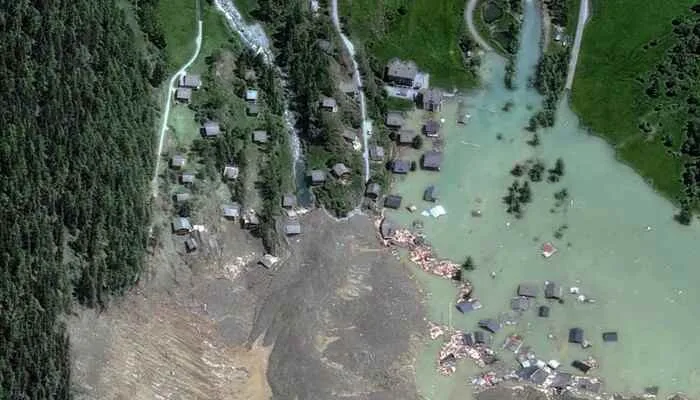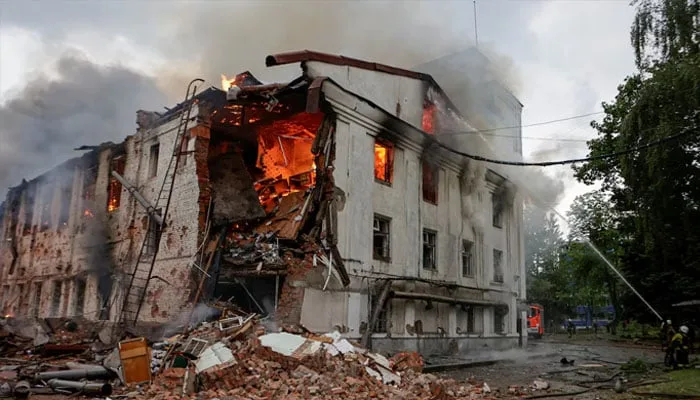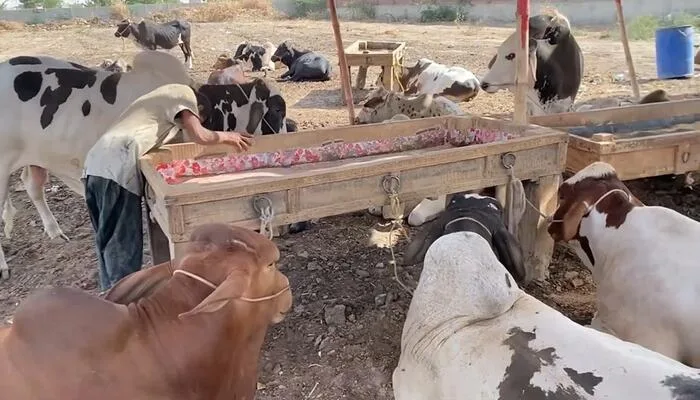
In a shocking turn of events, a glacier collapse in southern Switzerland buried the small alpine village of Blatten under tons of ice, mud, and debris. The incident occurred on May 28, following an alarming structural failure of a glacier in the Swiss Alps. Emergency authorities issued early warnings, which led to timely evacuations and no reported fatalities.
Witnesses described the roar of ice crashing down the mountain as terrifying. Satellite images later confirmed that a significant portion of the glacier had broken off, triggering a massive avalanche. Swiss authorities are now assessing the damage and studying what caused the sudden collapse.
The village, once a peaceful tourist spot, now lies in ruins. Homes, roads, and infrastructure are either buried or severely damaged. Experts say that such large-scale glacier-related disasters are becoming more frequent.
Read: Pakistan Will Never Let Water Rights Be Violated: PM Shehbaz
Scientists Warn of Accelerating Glacier Melt
Climate scientists link the glacier collapse directly to rising global temperatures. The World Meteorological Organization’s recent report confirms 2021–2024 as the most damaging period for global glaciers. In fact, seven of the ten worst years for glacier mass loss since 1950 have occurred since 2016.
“Our glaciers are dying,” said WMO Secretary-General Celeste Saulo. “The death of a glacier means more than just ice loss—it devastates ecosystems, water supplies, and local economies.”
There are over 275,000 glaciers globally, storing about 70% of the world’s freshwater. The continuous melting threatens not only natural habitats but also the livelihood of millions who rely on glaciers for water during dry seasons.
Venezuela recently became the second country after Slovenia to lose all of its glaciers. Nepal, too, declared the complete loss of the Yala Glacier. These changes are stark indicators that climate change is no longer a distant threat—it is a present-day crisis.
Global Call for Urgent Action
The Swiss incident has reignited calls for global action. Tajikistan’s President Emomali Rahmon, during the International Year of Glaciers’ Preservation, stressed the need for international cooperation. “Glacier preservation is not just the responsibility of a few nations—it is a global crisis,” he said.
At the same time, the upcoming Dushanbe Glaciers Declaration aims to present strategic solutions at COP30 in Brazil. The initiative, supported by UNESCO, the Asian Development Bank, and the World Meteorological Organization, pushes for immediate policy changes, funding, and early-warning systems in vulnerable countries.
UN Deputy Secretary-General Amina Mohammed emphasized the human impact. “Since 1975, glaciers have lost over 9,000 billion tons of ice. This is equivalent to an ice block the size of Germany with a thickness of 25 meters.”
As climate emergencies grow more common, experts urge countries to strengthen multi-hazard early warning systems and shift to sustainable development models.
















